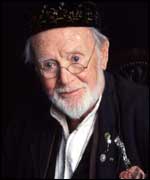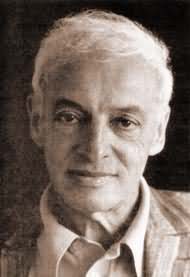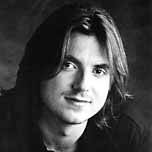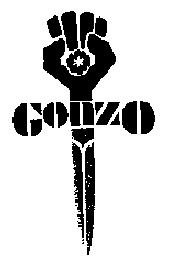Terri Schiavo, the Brain-Damaged Florida Woman, Dies 13 Days After Feeding Tube Removed
By MIKE SCHNEIDER
The Associated Press
Mar. 31, 2005 - Terri Schiavo, the severely brain-damaged woman whose final years tethered to a feeding tube sparked a bitter feud over her fate that divided a family and a nation, died Thursday.
Schiavo, 41, died quietly in a Pinellas Park hospice 13 days after her feeding tube was removed despite extraordinary intervention by Florida lawmakers, Congress and President Bush efforts that were rebuffed at every turn by the courts.
Her death was confirmed to The Associated Press by Michael Schiavo's attorney, George Felos, and announced to reporters outside her hospice by a family adviser.
"I

Terry Schiavo in 2001.

t is with great sadness that it's been reported to us that Terri Schiavo has passed away," said Paul O'Donnell, a spokesman for the Schindlers. He said her parents would be making a statement later Thursday.
David Gibbs III, lawyer for Schiavo's parents Bob and Mary Schindler, said outside the hospice that the parents were grieving in private. Terri Schiavo's siblings, Bobby Schindler and Suzanne Vitadamo, were in the room with her until 10 minutes before she died, Gibbs said.
"This is indeed a sad day for the nation, for the family. Their faith in God remains strong," Gibbs said. "God loves Terry more than they do. She is at peace."
Dawn Kozsey, 47, a musician who was among those outside Schiavo's hospice, wept when she learned of the woman's death.
"Words cannot express the rage I feel," she said. "Is my heart broken for this? Yes."
A small group of activists sang religious hymns outside the hospice, raising their hands to the sky and closing their eyes.
In Tallahassee, Senate President Tom Lee, R-Brandon, stopped debate on a bill to announce Schiavo's death.
"Regardless of your perspective on end of life issues, it is a very sad moment and it is a very reflective moment for a lot of us and I think it would appropriate to have a moment of silence in her honor," Lee told the Senate.
Sen. Daniel Webster, who unsuccessfully sought support for a bill written to keep Schiavo alive, stood with his eyes closed. Behind him Sen. Gary Siplin, who voted against the bill, held his hands out palm up and also closed his eyes.
An autopsy is planned, with both sides hoping that would shed more light on her condition.
A shy woman who avoided the spotlight, Schiavo spent her final months as the focus of a media frenzy and an epic legal battle between her husband and parents over whether she should live or die.
Protesters streamed into Pinellas Park to keep vigil outside her hospice, with many arrested as they tried to bring her food and water. The Vatican likened the removal of her feeding tube to capital punishment for an innocent woman.
Politicians repeatedly tried to intervene as her parents, Bob and Mary Schindler, pleaded for their daughter's life, calling the removal of the feeding tube "judicial homicide."
"Something has to be done and has to be done quick," Bob Schindler said, a week after the tube was removed March 18, as the family's legal options dwindled. "I think the people who are anxious to see her die are getting their wish."
Although several right-to-die cases have been fought in the courts across the nation in recent years, none has been this public, drawn-out and bitter.
Schiavo depended on a feeding tube for more than 15 years after she collapsed and was left in what court-appointed doctors said was a vegetative state. Her husband, Michael, said she would not want to be kept alive artificially and courts agreed.
Terri Schiavo's parents, Bob and Mary Schindler, kept up their desperate appeals, maintaining that their daughter could improve. They said she laughed, cried, responded to them and tried to talk.
The case wound its way through six courts for seven years; the U.S. Supreme Court declined to intervene six times, the final time Wednesday. Schiavo's fate was debated on the floor of Congress and by President Bush, who signed an extraordinary bill March 21 that let federal judges review her case.
"In extraordinary circumstances like this, it is wise to always err on the side of life," the president said.
But federal courts refused to overturn rulings by state judges. The federal government has usually left right-to-die issues to the states, and the courts repeatedly found the parents' arguments had no merit.
Before people became obsessed with whether she should die, Terri Schiavo avoided the limelight.
Described by her family as a shy woman who loved animals, music and basketball, Terri Schindler grew up in Pennsylvania and battled a weight problem in her youth. She blossomed when the weight came off.
"Terri has always been beautiful from the inside out," a friend, Diane Meyer, said in 2003. "And then when she lost all the weight, she really became quite beautiful on the outside as well. What was inside she allowed to shine out at that point."
She met Michael Schiavo pronounced SHI voh at Bucks County Community College near Philadelphia in 1982. They wed two years later. After they moved to Florida, she worked in an insurance agency.
But recurring battles with weight led to the eating disorder that is blamed for her collapse at age 26. Doctors said she suffered severe brain damage when her heart stopped beating because of a potassium imbalance. Her brain was deprived of oxygen for 10 minutes before she was revived, doctors estimated.
Because Terri Schiavo did not leave written wishes on her care, Florida law gave preference to Michael Schiavo over her parents. But the law also recognizes parents as having crucial opinions in the care of an incapacitated person.
A court-appointed physician testified her brain damage was so severe that there was no hope she would ever have any cognitive abilities.
Still, her parents, who visited her nearly every day, reported their daughter laughed, cried, smiled and responded to their voices. Video showing the dark-haired woman appearing to interact with her family was televised nationally. But the court-appointed doctor said the noises and facial expressions were reflexes.
Both sides accused each other of being motivated by greed over a $1 million medical malpractice award from doctors who failed to diagnose the chemical imbalance. However, that money, which Michael Schiavo received in 1993, has all but evaporated, spent on his wife's care and the court fight. Just $40,000 to $50,000 remained as of mid-March.
Michael Schiavo's lawyers suggested the Schindlers wanted to get some of the money. And the Schindlers questioned their son-in-law's sincerity, saying he never mentioned his wife's wishes until winning the case.
The parents tried to have Michael Schiavo removed as his wife's guardian because he lives with another woman and has two children with her. Michael Schiavo has refused to divorce his wife, saying he feared the Schindlers would ignore her desire to die.
Schiavo lived in her brain-damaged state longer than two other young women whose cases brought right-to-die issues to the forefront of public attention.
Karen Quinlan lived for more than a decade in a vegetative state brought on by alcohol and drugs in 1975 when she was 21 until New Jersey courts finally let her parents take her off a respirator. Nancy Cruzan, who was 25 when a 1983 car crash placed her in a vegetative state, lived nearly eight years before the U.S. Supreme Court ruled that her parents could withdraw her feeding tube.
In those cases, however, the family agreed to end life-saving measures.
Heeding her husband's wishes, a judge first ordered Schiavo's feeding tube removed five years ago, and it was briefly removed in 2001. It was reinserted after two days when a court intervened.
In October 2003, the tube was removed again, but Gov. Jeb Bush hastily pushed "Terri's Law" through the legislature, allowing the state to have the feeding tube reinserted after six days. The Florida Supreme Court later ruled that law was unconstitutional.
On March 18, the tube was removed for the third and final time.
Copyright 2005 The Associated Press. All rights reserved. This material may not be published, broadcast, rewritten, or redistributed.
Copyright © 2005 ABC News Internet Ventures











